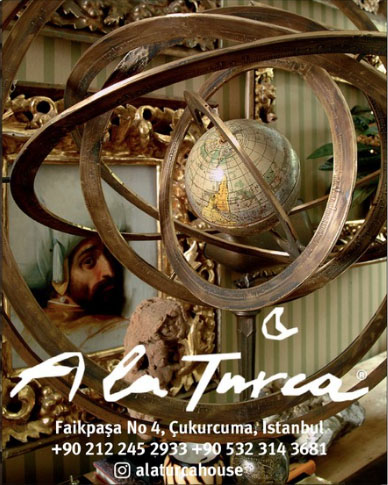Sunday 5 May, Towermill Cinema, Hawick, Scottish Borders.
A selection of shorts demonstrating a range of formal strategies presently at play in the experimental work of Turkish filmmakers.
Specially curated on behalf of Cornucopia by Julie Witford, the screening was both well attended and well received.
Eyup Ozkan’s Multiple Projection: Futurist Attack, an energetic found-footage response to Filippo Tommasi Marinetti’s Manifesto of Futurism, employs jump-cuts, zooms, playbacks, superimpositions – and juxtaposes cut-outs of Justin Bieber and Michel Foucault.
By comparison, Alican Durbaş's Soil is more unwavering in its pace, creating a self-contained world divided into nine synchronised, tripod-fixed vantage points depicting a young man burying a soldier. In foregrounding its own structuring device, Durbaş’ film poses fundamental questions about the mechanics behind narrative storytelling.
Ece Ezer, multidisciplinary video artist and one of Turkey’s most exciting young filmmaking talents, has no less than three world premieres in this programme. In Un/re/veal/ed, a human figure breeds versions of itself: a glitch in triplicate form. In 1., a tremoring voice lends existential thoughts to scenes of an everyday residential cul-de-sac. In GGH, Ezer films a journey on the 500T, an extremely popular public bus route that traverses 73 kilometres, 77 stops, 14 districts and two continents. Across these films, Ezer demonstrates a variety of styles and interests as well as a command over her material.
Yoel Meranda’s Meadows is a silent video, shot on 8 December 2016, on Edinburgh’s Meadows. Setting out to test his Sony camera, Meranda recorded a night of unusual serenity: a nocturnal city in the throes of sporting activity. Continuing themes of leisure, FERHAT’s Pehlivan is a lively music video about (and starring) oil wrestlers. Flesh and physical prowess abound.
Constructed mostly from images recorded during 2015 in Cizre, a primarily Kurdish town on the Turkish-Syrian border, belit sağ’s what remains explores the boundaries between life and death, presence and absence, present and past, image and memory – all through the lens of video technology: its uses, functions, potential. View an earlier rendition:
Shot at Film Farm in Mount Forest, Ontario, Nazlı Dincçel’s Instructions on How to Make a Film closed the programme with a mix of performance, educational voiceover, analogue filmmaking, ASCII, and text to probe the ethics of ethnography and narrative storytelling. Boasting beautiful black-and-white photography, Dincçel’s film is a comedy underpinned by wisdom from Ontario-born scholar Barbara Kirshenblatt-Gimblett and an instructional webpage from Wikihow.
Michael Pattison
Creative Director, Alchemy Film & Arts










